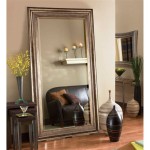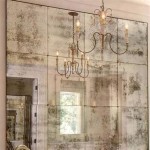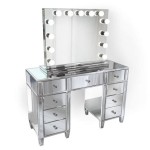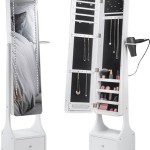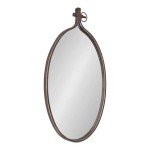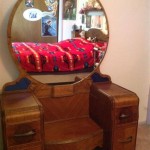Antique Bureau with Mirror: A Blend of Functionality and Elegance
Antique bureaus with mirrors, often referred to as vanity dressers or dressing tables, represent a fascinating intersection of practicality and artistry. These pieces, originating centuries ago, served as essential furniture for personal grooming and storage. Their enduring appeal lies in their ability to combine functionality with decorative elements, making them coveted additions to modern interiors.
The evolution of the bureau with mirror can be traced back to the 17th century in Europe. Early examples were simple chests of drawers with attached mirrors, often designed with basic functionality in mind. As craftsmanship and design sensibilities evolved, these pieces became increasingly ornate and elaborate, reflecting the prevailing artistic styles of their respective periods.
Key Features of Antique Bureaus with Mirror
Several key features distinguish antique bureaus with mirrors and contribute to their value and desirability. Understanding these characteristics can assist collectors and enthusiasts in identifying authentic pieces and appreciating their unique qualities.
Construction and Materials
Antique bureaus were typically crafted from solid wood, often utilizing hardwoods like mahogany, walnut, or oak. The quality of the wood and the joinery techniques employed are indicative of the piece's craftsmanship and age. Dovetail joints, mortise and tenon construction, and hand-carved details suggest a higher level of craftsmanship and often point to an earlier period.
Mirror Styles and Attachments
The mirrors incorporated into antique bureaus varied significantly in style and attachment methods. Early examples featured smaller, simpler mirrors, sometimes attached with hinges or pivots. As the form developed, larger, more elaborate mirrors became common, often framed within intricately carved wood or featuring beveled edges. Swing mirrors, tri-fold mirrors, and cheval mirrors represent some of the diverse styles found in antique bureaus.
Drawer Configuration and Hardware
The arrangement and number of drawers in an antique bureau are also significant features. Some pieces feature a single row of drawers, while others incorporate multiple tiers or a combination of drawers and compartments. The hardware, including handles, pulls, and keyhole escutcheons, offer further clues to the piece's age and origin. Materials such as brass, porcelain, and bone were commonly used for hardware, often exhibiting decorative motifs characteristic of specific periods.
Decorative Elements and Styles
Antique bureaus with mirrors showcase a wide range of decorative elements, reflecting the design trends prevalent during their creation. Inlaid wood, marquetry, veneer work, and painted details are some of the embellishments that enhance the visual appeal of these pieces. Specific styles, such as Queen Anne, Chippendale, and Victorian, are recognizable through their characteristic design elements and can help determine the age and provenance of the bureau.
Identifying and Evaluating Antique Bureaus
Assessing the authenticity and value of an antique bureau with mirror requires careful examination and consideration of several factors. Examining the construction techniques, hardware, and decorative elements can provide valuable insights into the piece's age and origin. Looking for signs of wear and repair, while sometimes perceived as flaws, can actually contribute to the piece's authenticity and historical significance.
Caring for Antique Bureaus
Preserving the beauty and integrity of an antique bureau with mirror necessitates proper care and maintenance. Regular dusting with a soft cloth and avoiding harsh cleaning chemicals are essential for protecting the wood finish. Extreme temperature fluctuations and excessive humidity should be avoided to prevent damage to the wood and mirror. Consulting with a professional antique furniture restorer is recommended for significant repairs or restoration work to ensure the piece's historical integrity is maintained.
Placement and Functionality in Modern Interiors
Antique bureaus with mirrors can seamlessly integrate into a variety of interior design schemes. Their versatility allows them to function as elegant bedroom vanities, hallway consoles, or even small writing desks in living areas. The reflective qualities of the mirror can enhance the sense of space and light in a room, while the bureau itself provides valuable storage space. Choosing appropriate accessories and surrounding décor can further complement the bureau and create a cohesive and stylish aesthetic.

Early 1900s Antique Oak Dresser With Mirror Bedroom Furniture Shabby Chic

Before And After Antique Dresser With Mirror

Small Antique Dresser With Mirror Midtown Furniture

Antique Vintage Serpentine Tigerwood Mirror Dresser And Matching Wash Stand With Oak Furniture

Vintage Dresser With Mirror Chairish

Sold Midnight Blue Vintage Painted Dresser With Tilt Mirror Milk Furniture Buffet Antique Denmark

Best Dresser With Mirror Antique Victorian Furniture For

Conjunto De Mesas Vestir Com Espelho Estilo Europeu Antique Dresser Furniture E Maquiagem Fezes Mesa Toucador Madeira Alta Qualidade China Mobiliário Casa

Pretty In Prelude Antique Dresser With Mirror Tuesday S Treasures Funcycled

1800s Antique Wood 6 Drawer Dresser With Attached Beveled Mirror Chairish

